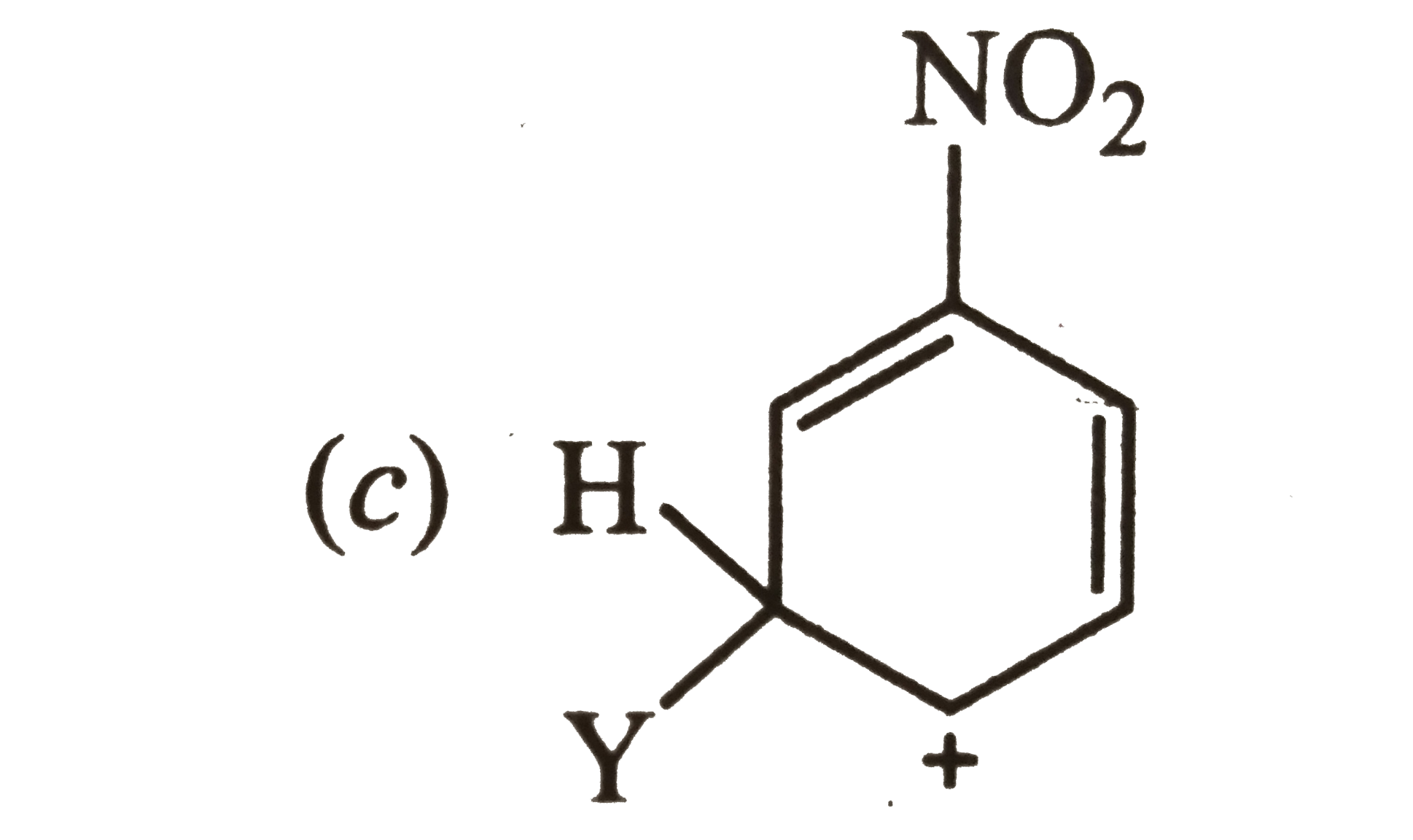Which of the following carbocation is expected to be least stable




The correct Answer is:C
To determine which of the given carbocations is the least stable, we will analyze the stability of each carbocation based on two main factors: inductive effect and hyperconjugation.
1. Identify the Carbocations:
We are given four carbocations (let's label them A, B, C, and D). Each carbocation has different substituents and structures.
2. Understand Inductive Effect:
- The inductive effect refers to the electron-donating or withdrawing effects of substituents attached to the carbon chain.
- Electron-donating groups (like alkyl groups) stabilize carbocations by providing electron density through the inductive effect. The closer the electron-donating group is to the positively charged carbon, the greater the stabilization.
3. Analyze Each Carbocation:
- Carbocation A: Has a methyl group directly attached, which can stabilize the positive charge through both inductive effect and hyperconjugation.
- Carbocation B: Also has a methyl group nearby, which can stabilize the positive charge effectively.
- Carbocation C: The positive charge is further away from the methyl group, which means less stabilization from the inductive effect.
- Carbocation D: Similar to C, but with even less stabilization due to the distance from the methyl group.
4. Consider Hyperconjugation:
- Hyperconjugation involves the overlap of sigma bonds (C-H or C-C) with the empty p-orbital of the positively charged carbon.
- The more alpha hydrogens (hydrogens on the carbon adjacent to the positively charged carbon), the greater the hyperconjugation effect, leading to increased stability.
5. Count Alpha Hydrogens:
- Carbocation A: Has several alpha hydrogens, contributing to hyperconjugation.
- Carbocation B: Also has a good number of alpha hydrogens.
- Carbocation C: Has fewer alpha hydrogens, reducing hyperconjugation.
- Carbocation D: Has the least alpha hydrogens, leading to minimal hyperconjugation.
6. Conclusion:
After analyzing the inductive effects and hyperconjugation for each carbocation, we find that Carbocation C is the least stable due to its distance from the electron-donating methyl group and the minimal number of alpha hydrogens.
Final Answer:
Carbocation C is expected to be the least stable.
---
We are given four carbocations (let's label them A, B, C, and D). Each carbocation has different substituents and structures.
- The inductive effect refers to the electron-donating or withdrawing effects of substituents attached to the carbon chain.
- Electron-donating groups (like alkyl groups) stabilize carbocations by providing electron density through the inductive effect. The closer the electron-donating group is to the positively charged carbon, the greater the stabilization.
- Carbocation A: Has a methyl group directly attached, which can stabilize the positive charge through both inductive effect and hyperconjugation.
- Carbocation B: Also has a methyl group nearby, which can stabilize the positive charge effectively.
- Carbocation C: The positive charge is further away from the methyl group, which means less stabilization from the inductive effect.
- Carbocation D: Similar to C, but with even less stabilization due to the distance from the methyl group.
- Hyperconjugation involves the overlap of sigma bonds (C-H or C-C) with the empty p-orbital of the positively charged carbon.
- The more alpha hydrogens (hydrogens on the carbon adjacent to the positively charged carbon), the greater the hyperconjugation effect, leading to increased stability.
- Carbocation A: Has several alpha hydrogens, contributing to hyperconjugation.
- Carbocation B: Also has a good number of alpha hydrogens.
- Carbocation C: Has fewer alpha hydrogens, reducing hyperconjugation.
- Carbocation D: Has the least alpha hydrogens, leading to minimal hyperconjugation.
After analyzing the inductive effects and hyperconjugation for each carbocation, we find that Carbocation C is the least stable due to its distance from the electron-donating methyl group and the minimal number of alpha hydrogens.
Carbocation C is expected to be the least stable.
Topper's Solved these Questions
- HYDROCARBONS BOOK - NARAYNACHAPTER - HYDROCARBONS EXERCISE - EXERCISE - 2 (H.W) (PREPARATION & PROPERTIES)
5 Videos
- HYDROCARBONS BOOK - NARAYNACHAPTER - HYDROCARBONS EXERCISE - EXERCISE - 3
25 Videos
- HYDROCARBONS BOOK - NARAYNACHAPTER - HYDROCARBONS EXERCISE - EXERCISE - 2 (H.W) (ALKENES) (PREPARATIONS OF ALKENES)
2 Videos
- GENERAL ORGANIC CHEMISTRYBOOK - NARAYNACHAPTER - GENERAL ORGANIC CHEMISTRYEXERCISE - Matrix-Match type questions
7 Videos
- HYDROGEN & ITS COMPOUCDSBOOK - NARAYNACHAPTER - HYDROGEN & ITS COMPOUCDSEXERCISE - Interger type questions
10 Videos
Similar Questions
Knowledge Check
Which of the following carbocations is expected to be most stable ?
A B
B C
C D
D
Which of the following carbocations is expected to be most stable?
A B
B C
C D
D
Which of the following carbocations is expected to be most stable ?
A B
B C
C D
D
Which of the following carbocations is expected to be most stable?
View SolutionWhich of the following carbocations is expected to be most stable?
View SolutionWhich of the following carbocations is expected to be most stable?
View Solutionwhich of the following carbon is expected to be least stable.
View SolutionWhich of the following carbocations is excepted to be most stable
View Solution
